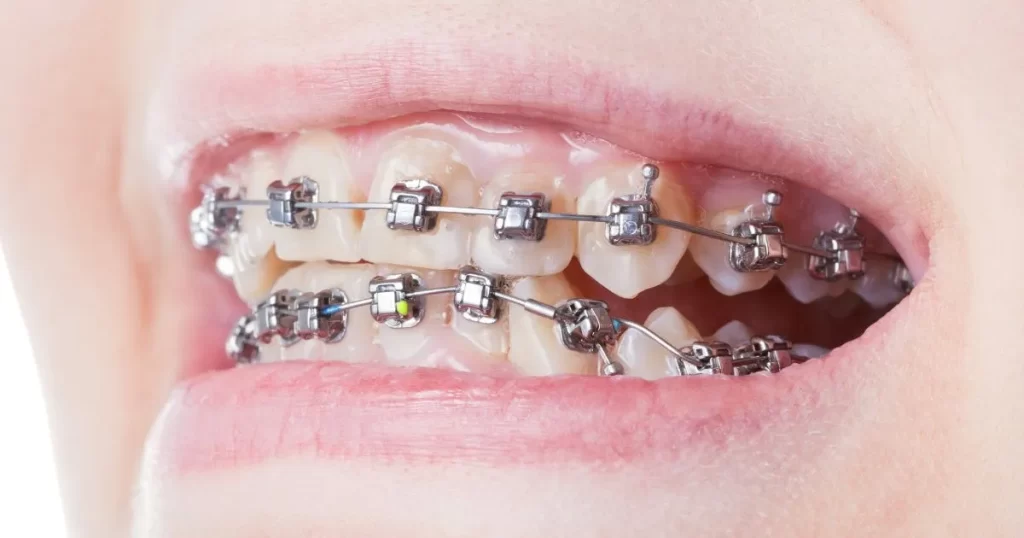Self-Ligating Braces
- Home
- Dental Braces
- Self-Ligating Braces
If you are considering orthodontic treatment, you may have heard of self-ligating braces. Self-ligating braces are an advanced type of orthodontic treatment that offer several benefits over traditional braces. In this guide, we will discuss what self-ligating braces are, how they work, and the benefits of this treatment option.

Self-ligating braces are an orthodontic treatment that uses a specialized bracket system to move teeth into their correct position. Unlike traditional braces, which use elastic bands to hold the wire in place, self-ligating braces use a sliding mechanism to hold the wire in place. This sliding mechanism eliminates the need for elastic bands, making self-ligating braces more comfortable and efficient than traditional braces.
Self-ligating braces work by using a specialized bracket system that holds the wire in place without the need for elastic bands. The brackets have a sliding mechanism that holds the wire in place, which allows the wire to move more freely and efficiently. This sliding mechanism also reduces the amount of friction between the wire and bracket, which can help reduce discomfort and shorten treatment time.
In addition, self-ligating braces use lighter wires than traditional braces, which also helps reduce discomfort and treatment time. The lighter wires are able to move teeth into their correct position more efficiently, which means you may need fewer adjustments and appointments with your orthodontist.
Self-ligating braces offer several benefits over traditional metal braces, including:
Faster treatment time: Self-ligating braces can help you achieve your desired results faster than traditional metal braces. The sliding mechanism allows the wire to move more efficiently, which means you may need fewer adjustments and appointments with your orthodontist.
More comfortable: Self-ligating braces are more comfortable than traditional braces because they use lighter wires and eliminate the need for elastic bands. This can help reduce discomfort and irritation in your mouth.
Easier to clean: Self-ligating braces are easier to clean than traditional braces because there are no elastic bands to trap food and bacteria. This can help improve your oral hygiene and reduce the risk of tooth decay and gum disease.
Improved aesthetics: Self-ligating braces are more discreet than traditional braces because they are smaller and do not have elastic bands. This can help improve your confidence during treatment.
Self-ligating braces are a great option for many patients, but they may not be the right choice for everyone. Here are some factors to consider when determining if self-ligating braces are a good fit for you:
Age: Self-ligating braces are a good option for patients of all ages, but they may be particularly appealing to adults who are looking for a more discreet treatment option.
Dental Problems: Self-ligating braces are just as effective as traditional braces when it comes to correcting dental problems such as crooked teeth, gaps, and bite issues.
Lifestyle: Self-ligating braces require a certain level of commitment, including regular visits to the orthodontist, proper oral hygiene, and diet restrictions. If you are willing to make these commitments, self-ligating braces may be a good choice for you.
Budget: Self-ligating braces can be more expensive than traditional braces, so it’s important to consider your budget when deciding on a treatment option.
Personal preference: Ultimately, the decision to choose self-ligating braces over traditional braces will come down to personal preference. Some patients prefer the convenience and comfort of self-ligating braces, while others may prefer the lower cost of traditional braces.
Proper care of your self-ligating braces is important to ensure they work effectively and efficiently. Here are some tips for caring for your self-ligating braces:
Brush and floss regularly: It’s important to maintain good oral hygiene when wearing braces. Brush your teeth at least twice a day and floss once a day to remove any food particles and plaque that may be trapped in your braces.
Avoid certain foods: Certain foods can damage or break your braces, so it’s important to avoid them during treatment. These include hard, sticky, or chewy foods like candy, popcorn, and ice.
Attend all scheduled appointments: Regular appointments with your orthodontist are important to ensure your treatment is progressing as planned. Be sure to attend all scheduled appointments and follow your orthodontist’s recommendations.
Wear a mouthguard when playing sports: If you play sports, it’s important to wear a mouthguard to protect your braces and teeth from injury.
Be patient: Orthodontic treatment takes time, and it’s important to be patient and follow your orthodontist’s recommendations for the best results.
Self-ligating braces are an advanced orthodontic treatment that offer several benefits over traditional braces. They are more comfortable, faster, and easier to care for than traditional braces, making them a great option for many patients. If you are considering orthodontic treatment, talk to your orthodontist about whether self-ligating braces are right for you. With proper care and commitment, self-ligating braces can help you achieve a healthy, beautiful smile that will last a lifetime.

